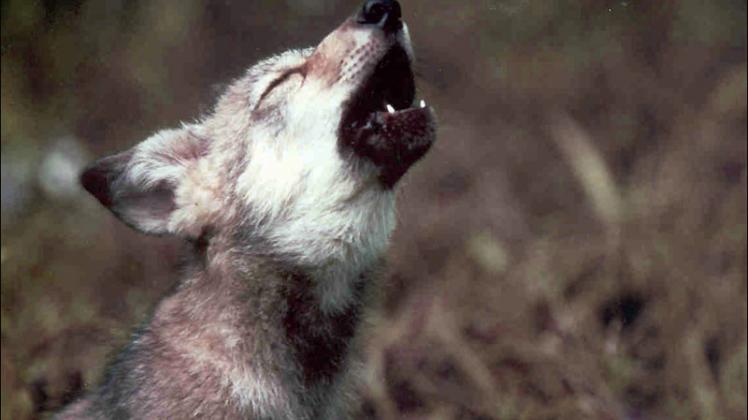
Inside Idaho’s Frank Church River of No Return Wilderness, humans and wolves learn to co-exist.
It came from the right, a pale shape zigzagging through the trees 100 yards upslope from where we were hiding. Entering a clearing, the fleeting blur materialized into a pure white adult wolf. It paused, glanced back in our direction, then vanished into the forest.
“They’re like ghosts,” Idaho biologist and noted gray wolf researcher Jim Akenson whispered as we huddled in a conifer forest 50 miles from the nearest paved road. Tall, red-bearded, and an avid hiker, Akenson has spent 25 years studying wolves and cougars from Montana to Oregon. Together with four undergraduates from the University of Idaho, we were several hours into a three-day backpacking trip to locate and count wolf pups inside Idaho’s 2.4-million-acre Frank Church-River of No Return Wilderness. Earlier in the day, Jim’s wife Holly had dropped off supplies to sustain our search for a pack’s well-hidden den and the litter of newborn pups it might contain. Then she’d led a string of pack mules back to Taylor Ranch, the off-the-grid research station that is their year-round home.
To Jim, the appearance of the all-white female was a good omen. He identified her as the omega wolf, the lowest-ranking member of the pack who often serves as a sentry when the alpha female is tending her pups. Find the omega wolf, Jim told us, and the den is likely nearby.
As carnivore biologists at the University of Idaho, the Akensons have conducted census forays in the rugged mountains surrounding Taylor Ranch since 1997, shortly after the U.S. Fish and Wildlife Service (USFWS) reintroduced 66 Canadian gray wolves to the northern Rockies. Today, wildlife biologists estimate that 700 animals roam the state. As Jim later told me, “We’ve watched them grow from day one.” Because wolves had been missing from central Idaho for decades, the couple’s field research has become the new baseline for understanding pack behavior–and is now producing important findings just as another wolf controversy flares up.
In the 12 years since wolves returned to Idaho, they’ve generated a backlash from some locals who fear the impact of these predators on the state’s economy and customs–ranchers upset about attacks on livestock, hunters who believe the packs are thinning elk herds. The issue heated up again last February when the USFWS proposed removing the Rocky Mountain gray wolf from the Endangered Species List and turning management over to the states. In Idaho, that would place wolves under the jurisdiction of Gov. C.L. “Butch” Otter, who said earlier this year that he favors culling the state’s population to 100 animals. But extreme positions like that have recently started to lose ground as Idahoans learn more accurate information about the role and behavior of wolves in their state. And the primary impetus for this attitude shift is the pioneering research by scientists like the Akensons.
So far, their findings have overturned one common perception about wolf and prey interactions: Wolves aren’t decimating the state’s elk population the way many hunters claim. As Holly explained from the living room of Taylor Ranch, elk began to decline five years before wolves were reintroduced to Idaho. “The herds were not at sustainable numbers,” she said. In addition, the Akensons believe that the prowling packs are forcing elk to become more cautious. Fearing ambush, the game animals no longer graze in wide-open meadows, but retreat to thick timber and steep-sided canyons where many hunters can’t find them. Still, the Akensons are not opposed to a wolf hunt. They believe large wilderness areas like the Frank Church should remain off limits, but agree that a limited cull could be directed at packs that prey frequently on livestock. “We need to target the problem wolves,” she said, “not the packs out here.”
On the second morning of our hike, we awoke early and staked out two positions on opposite sides of the forested basin where the white wolf appeared. Within an hour, the pack’s gray-and-white, 120-pound alpha male sauntered out of the trees, the dark band of a radio collar visible around his neck. Even from a distance, his large size and confident bearing were impressive. Then he stopped, shot a wary glance at one of our hiding spots, and trotted over the ridge and disappeared. We tried to follow him, and staked out several more promising clearings, but saw no more wolves for the rest of the afternoon.
– See more at: http://www.backpacker.com/destinations-stories/the-wolf-watchers-researching-wolves-in-idaho/#sthash.zRZGMVF1.dpuf
Source: The Wolf Watchers: Researching Wolves In Idaho – Backpacker
